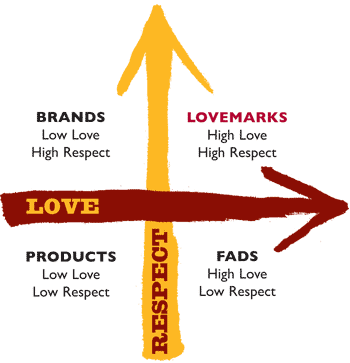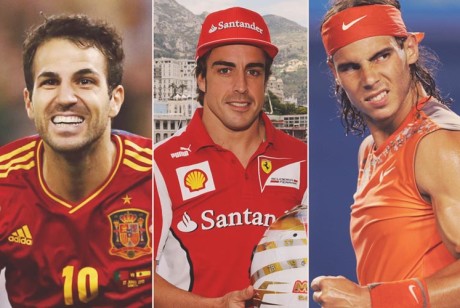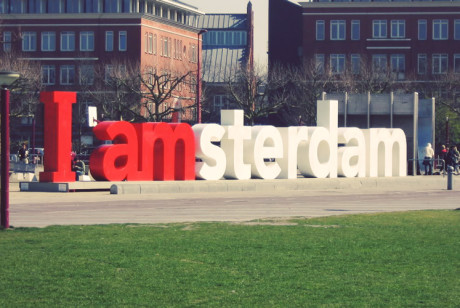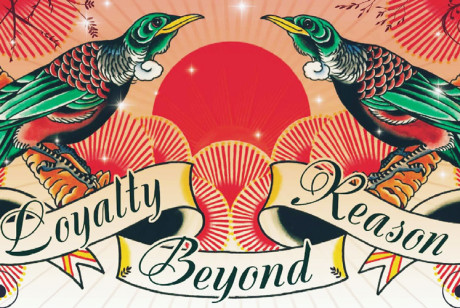A New World
Thursday, 11 July 2002 - Surfers Paradise, Australia

Presentation Summary
An address to the Australian and New Zealand Academy of Management (ANZAM) and the International Federation of Scholarly Associations of Management (IFSAM) World Congress. The complexity of global management requires a transformation in the local/global relationship. People live in the local and the action is at the edge. To achieve sustained peak performance organizations need inspirational players to create the web of cross-border relationships and a love that knows no bounds.
As management academics you will be comfortable with the rhetoric of the new. One of your tasks has always been to define the changes that businesses, managers and entrepreneurs face. During this Congress a further task awaits you. The need to step up and act. For you too face a new world. And a new challenge.
This Congress is about “Management in a global context” and its prospects for the 21st century. “Global” and “Management” as big ideas belong back in the last century. To win in this 21st century both need to be transformed. And this is true whether you are a scholar or a manager, a teacher or a leader.
Let’s start with the concept of “global context” and how it is being reshaped by a new world. Then onto “Management” drawing together both practice and theory. How can they respond to our new world?
To Global From Local
You will be familiar with Ted Levitt’s article “The globalization of markets.” It proved a watershed. Saatchi & Saatchi in the UK picked up Levitt’s argument. With their advocacy of global brands they led the charge for an assertive globalism. They even put Ted on the Saatchi Board.
That was almost 20 years ago and those two decades have seen remarkable advances in global integration. Business has become increasingly global. At the start of 2002, Foreign Policy magazine and AT Kearney published their latest Global Index. It uncovers a dense web of cross-border relationships. The Index looks at indicators like foreign direct investment and portfolio capital flows, number of memberships in international organizations, international travel and telephone traffic, number of Internet users and Internet hosts in dozens of advanced economies and key emerging markets worldwide.
Ireland topped the list while that demon of the anti-globalization movement, the United States, came in at Number 12. Australia didn’t rank in the top 20 while New Zealand squeaked in at 19!
Although shaken by the events of the last two years, this web of connections still holds fast. Your being here from many different parts of the world is further evidence of its power.
This surge of economic growth and global integration, however, is not unstoppable. At AT Kearney’s latest CEO retreat for the Global Business Policy Council in Berlin last month, however, the consensus was very clear among business leaders, politicians and academics. The free movement of goods, people and capital that has driven global integration can no longer be taken for granted. We have learnt the hard way that it can be used by terrorist networks as well as by businesses. There are risks as well as benefits.
John Quelch from Harvard and I were on the panel in Berlin together. Many of you here will be familiar with his work and his challenge to Levitt’s account of the global. We agreed: the global has become so complex that as a single term it has lost traction. Local … regional … international … global … All ideas that are newly contentious.
Alan Rugman and Karl Moore talk of the modern economy as made up of overlapping layers rather than neatly defined spheres of influence. This insight reflects my experience. The action is at the Edge. The territory of innovation and the spawning ground of hybrids. Great ideas can come from anywhere, but many of them turn up on the edge where the control of the center is weakest and the energy of the Local most vital.
People live in the local. And they love it there. Human beings have always defined themselves by their differences. Art, music, fashion, design, entertainment, sport. Everything people are passionate about is taking a turn to the local. And we are all the richer for it. Witness the extraordinary spectacle of the World Cup in Korea and Japan last month. The glamour and drama of the global colored by the attitude and personality of the local.
Complexity and intense competition make solutions fixed on either central control or local control ineffective. Central control is too slow and cumbersome. Local control leaves gaps in innovation and performance wide open. Business has to do better.
Remember “Think Global Act Local”? Well forget it. “Act Global Think Local” is not much better. It’s right to start at the Local but that “Think” is all wrong. Just thinking about the global or local is never enough. What works better? “Act Local Go Global.” Action at both levels. True synergy.
A G Lafley, Chairman and CEO of Procter & Gamble believes that in ten years his toughest competitors will be focused local companies not global conglomerates or multi-nationals. Mounting evidence is on his side. Take the global assault on China. Four years ago 10 of the top 20 advertisers were global companies. You know the ones: Coke, IBM, McDonalds, Tide. Last year just one of the top 20 was global.
The same story is playing out in the beer market. Companies like Tsingtao in China and Brahma in Brazil.
This puts the pressure on you. The ideas to guide managers in this 21st century need greater sophistication to make a difference. I agree with C K Prahalad: “The next round of global expansion is as much about imagination as about resources.” This means drawing on the power of the “I’s” and the “E’s”.
- I for Ideas, Imagination, Intuition, Insight and Inspiration.
- E for Emotion, Empathy, Enchantment, Excitement, Edge.
So if the newly-complex global offers great opportunities to those with the imagination to seize them, what of management itself? How can management deal with this emerging new world?
From Management to Inspiration
Our answer to this question is a long-term research project I have been working on with Clive Gilson, Mike Pratt, and Ed Weymes. We are all associated with the University of Waikato Management School in New Zealand.
Our objective was to analyze the reasons for long-term organizational success. Why some organizations perform at peak, and why most do not. We were looking for the qualities and principles that all successful organizations need and nurture.
We were, in part, inspired in this research by Professor Jay Barney’s work just over a decade ago. More recently, Jay joined us at the Waikato Management School as an Honorary Professor, enabling us to have many fruitful conversations. His framework pointed out a viable path to sustainable competitive advantage. In his resource-based view of the firm he focused on those resources that are valuable, rare, imperfectly imitable and for which there are no substitutes. In an era of increasing commodification, our challenge was to account for patterns of organizational behavior that made rapid imitation by competitors very difficult, if not impossible.
We started by studying the world’s best team-based sports organizations like the New York Yankees, the British Williams Formula One team, the US women’s soccer team and Germany’s soccer team, Team New Zealand, the All Blacks, not to mention Australian hockey netball and cricket. All champions, all in contention, all of the time.
In the tough world of elite professional sport there is no place to hide. You win. You lose. You try to win again. The performance measures are utterly transparent. And as in the business world, you have to move fast.
The research behind Peak Performance theory and the methodology based on it took four years. It resulted in our book “Peak Performance: Inspirational Business Lessons from the World’s Top Sports Organizations” first published in 2000.
Our conclusion? It is not just about management and doing things right. The right strategy, structure and systems are no longer the source of competitive advantage.
And it’s not just about leadership and doing the right things. What do all leaders need to succeed? Followers. It’s still tough to find people with “born to follow” tattooed on their arms!
It’s about Inspiration. People being the best they can be. Peak Performance is about transforming organizations with inspiration.
In most management theory the word “Inspiration” is introduced as a top-level motivator and then quickly dropped. Part of PPO’s power is its language. Its unembarrassed connections with emotional reality. If the emotion centres of our brain are damaged in some way, we don’t just lose the ability to laugh or cry. We lose the ability to make decisions. Without emotion, rational thought slows and disintegrates. Our reason must have emotion to engage it. That’s why there is no separate box required for motivation; it permeates the entire model.
Our focus was very clear.
- How organizations created the conditions so that their people cared passionately about what they did
- How organizations responded effectively to extreme pressure
- How organizations kept getting better when they were already the best or conversely
- How organizations kept going even when they felt they were failing.
Inspirational Players give Peak Performance life. People are the heart and soul of every PPO. Peak Performance theory explains how Inspirational Players create an organization that continuously exceeds its organizational best in the pursuit of its purpose.
Organizational change theories often set up processes and structures and then add, “Without the right people, none of this will work.” In developing Peak Performance we started the other way around. With the people. The very term “Inspirational Player” sets people alight. Being a Manager or a Leader is just another label. But stepping up to being an Inspirer, an Inspirational Player – this demands personal as well as organizational transformation.
- Inspiration awakens people to their potential. To what they can be and what they can do.
- Inspiration is contagious. Those who inspire are also inspired and can move up to greater performance peaks themselves.
- Inspiration arouses people’s commitment to exceed their personal best. Not to beat the performance measures, not to beat the competition, but to exceed their personal best.
Our research identified two groups of Inspirational Players: Instigators and Inspirers. They’re those special and original people who are driven by ideas and have the ability to spark and accelerate action. They are not easy to find – and it’s tough to make them. But insiders or outsiders they will generate a passionate belief in the organization’s purpose.
Alongside the Instigators are the infectious and energetic Inspirers. These guys can be found everywhere in the organization. You’ll know where to find them because where they are is always where stuff happens.
People want to connect with them. To share ideas. To find out what is going on. For some this is a natural role. Others need to learn it. And they can.
The PPO Model
We have developed a detailed organizational change model based around Peak Performance principles.
Organizations progress through four stages to become a PPO.
- Performance
- Potency
- Practices
- and Purpose
The alliteration is very deliberate. To communicate PPO effectively we were determined to act the theory, not just talk about. To make new connections. Through the eye with shapes and images. The ear through alliteration. The emotions with inspiring stories of real people.
I will present the model quite quickly and move on to a couple of case studies. The key point remains the holistic nature of PPO. Peak Performers drive all the elements forward together – and in the same direction.
Phase 1: Purpose
The first step is to establish the Purpose of the organization. This is how everyone takes hold of the intent, meaning and direction of the organization. A meaningful Purpose is made up of three essential elements.
- The Inspirational Dream
- The Greatest Imaginable Challenge
- Focus
Inspirational Dream: An Inspirational Dream moves people and makes them want to belong. It touches the emotions and gives a sense of meaning and purpose. It answers the question, “Why are we here?” Why a dream? Because people connect with dreams. In 1963, Martin Luther King did not say, “I have a vision..”
The Greatest Imaginable Challenge: This Challenge is the Dream in action. The most demanding and rewarding achievement the organization can imagine. The Challenge provides the business rationale – measurable, achievable, stretching, exciting.
Focus: This is where the organization’s energy is concentrated and the fewer actions in focus the better. The Dream given a deadline. In PPOs people won’t tell you about their job description, they’ll tell you the part they play in driving the organization’s focus.
Phase 2: Practices
Once the Purpose is defined, Practices come into play. They put in place the necessary structure, context and environment for sustained performance.
- Creating the future
- Sharing the dream
- Family
Creating the future: This is about selecting, attracting and promoting the very best people. And in doing so always driving from each element of the Purpose.
Sharing the dream: This is how the Dream is communicated internally and externally. A PPO knows the language of emotional connections and uses it to share stories of success and legends, adversity and triumph. When you have a dream, that inspires people, you want to share it.
Family: Often many of the Practices PPO theory groups as Family are bundled together as culture. We used Family because all our teams did! They recognized the deep need people have for close, long-lived relationships.
Phase 3: Potency
Following Purpose and Practices is Potency. Here organizations can mobilize those intangibles of thought, emotion, intuition, desire, hope.
This rich potential can be shaped by three qualities:
- Harmony
- Passion
- Flow
Harmony: Emerging from a strong sense of shared purpose, harmony is how high performing organizations create dynamic order at both the individual and collective level.
Passion: Passion drives a PPO. A passion to win. A passion to be the best possible. Unrelenting. Intense. Passion annihilates cynicism and negativity. Passion feeds on the energy of optimism.
Flow: Flow is a requirement for engagement and higher order creativity. A PPO aligns both personal and organizational flow experience. It’s all about being in the zone.
Phase 4: Performance
And finally, building on Purpose, Practices and Potency we arrive at sustained Peak Performance. Here everything people do connects readily with the organization’s over-arching Purpose.
Last detail: The holistic nature of a PPO is clear. The Last detail can make a real, sustainable difference once it is embedded in a powerful process of organizational transformation. Details need Purpose.
Game-breaking idea: Game-breaking ideas can appear anywhere in the organization. They can be both radical and incremental. A PPO excels because it knows how to recognise game-breakers and do something with them.
Exceeding organizational best: And finally, a PPO keeps setting higher challenges and beating them.
PPO in Action
Once we had created the model based on our research into sports organizations, we tested the methodology in a range of large-scale organizations working in highly competitive areas. This is where we have focused our attention in the last three years. After around 25 workshops we are now well beyond the test phase and through it all the methodology has stood up to the different structures, cultures, objectives thrown at it.
Clive, Mike and I are now pushing further as we begin our investigation of Peak Performing creative with organizations like Dreamworks, Pixar, the Royal Shakespeare Company and the Bolshoi Ballet. This extends the work we have already done with Saatchi & Saatchi.
Over the past four years we have been transforming Saatchi & Saatchi from an advertising agency into an Ideas Company. From disparate offices around the world into a Peak Performing Organization. The transformation of our people from effective leaders into passionate inspirers.
At Saatchi & Saatchi our Purpose has been clearly defined so that we can all be inspired by our shared story. The first element is of course our Inspirational Players. These are the people who embody our core belief – “Nothing is Impossible.”
Our Inspirational Dream is “To be revered as the hothouse for world-changing creative ideas that transform our client’s businesses, brands and reputation.” This is at the heart of our transition from advertising agency to Ideas Company.
Our Greatest Imaginable Challenge is “To win our revenue and profit race by selling the most highly valued ideas.” Yes, it’s about money and also about our belief in the high value of ideas. Financial success brings opportunity.
For the last four years we’ve grown revenues faster than the market, margins from 6 percent to 13 percent and increased earning per share by 30 percent a year. We listed at one pound and sold for five. All fuelled by PPO. We’ve been “one team, one dream.”
Beyond dollars, one of the key measures of success in my world is the recognition of ideas and creativity by our peers. The most important recognition is given by the advertising awards in Cannes. By that measure Saatchi & Saatchi is coming close to Peak Performance.
Pre-PPO we were Number 4 in the world; post PPO we’ve been third, third and last year we were first equal. We were not satisfied. We closed out the 2002 Cannes two weeks ago with Network of the Year, Agency of the Year, Best Print, Best Poster, 12 Gold Lions across all categories, 13 agencies in our network taking awards. We aggregated 130 points; the next global network was awarded 61. Our margin was over double our nearest competitor. We’re approaching Peak Performance.
Saatchi & Saatchi has shifted its Focus from “Creating the best advertising in every category in every country”, to“creating and perpetuating Lovemarks through the power of our ideas.”
Lovemarks share powerful connections with PPO. A conviction in the power of emotion, a colorful vocabulary and the premise that in times of dramatic change, transformation is the only goal worth going for.
Lovemarks are the future beyond branding. Darwin would have got it straight off. Fish to lizard. Monkey to man. Brand to Lovemark.
- Lovemarks are super-evolved brands.
- Lovemarks belong to people, not to companies.
- Lovemarks inspire loyalty beyond reason.
- Lovemarks are the ultimate premium profit generator.
You know them instantly.
- Harley-Davidson, definitely. Suzuki? I don’t think so.
- Here’s an iMac. Here’s a ThinkPad. Sorry IBM.
- McDonalds? Lovemark. Burger King’s got the taste but not the Love.
To frame up Lovemarks we created the Love/Respect Axis.
Low Respect and Low Love – commodities, low value transactions. Essential but zero brand heat.
Low Respect and high Love – fads, trends, infatuations. This month’s gotta-haves. Next month’s has-beens.
High Respect and Low Love – great products, solid R&D. This is where most major brands are stuck fixed on the “e-r” words: newer, brighter, stronger, bolder. Table-stakes every one of them.
So turn to this uncharted territory: the Love dimension of the Love/Respect Axis. Here we can make deep connections. Here we can create Lovemarks.
Our client Toyota gets it. For decades their passion has been respect – but now they are hooking into emotion. Don Esmond at Toyota USA puts the new challenge: “It’s time to move from the most respected car company in America to the most loved.” That would put Toyota right here: High Respect and High Love. A Lovemark.
Lovemarks want it all. Forget the simplicity of either/or. In our complex world it’s and/and. Love and respect. Heart and mind. Emotion and reason. Profit and share. Local and global. And, and, and.
Lovemarks are brands infused with mystery, sensuality and intimacy. Mystery to touch dreams. Sensuality to enthrall the five senses. And intimacy to get up close and very personal.
Saatchi & Saatchi has now completed two years of research into Lovemarks – their metrics, their relevance, their psychology and their superior profit potential. We measure what matters: sales, share, profit, always being in contention.
We are starting to understand Love as deeply as we understand Respect. Connect Love and Respect and you can connect with anyone.
Another enthusiastic PPO partner with transformational goals is Procter & Gamble. The world’s largest fast-moving consumer goods company. The company that virtually invented modern marketing. I worked with P&G in the 1970s. One of the reasons I took on the CEO job at Saatchi & Saatchi was to work again with P&G. It is that kind of company. With their strength of culture and focus they were an ideal PPO candidate.
The 1990s were tough for P&G. Earnings stagnated, product investment did not get returns, costs blew out – and a major internal reorganization proved destabilizing. P&G was punished with a stock price that halved. The CEO resigned.
A G Lafley became CEO of Procter & Gamble in 2000 and he has just been appointed Chairman as well. A long-term P&Ger, he has transformed the organization so that it can deal with the very issues this Congress is charged to address. A complex global environment. A new level of management skill and focus.
The P&G culture is legendary – and the nickname “Proctoids” has not been meant kindly. AG picked up on the idea of a Peak Performing Organization immediately. It was perfectly in tune with his objective of transforming P&G. I spoke to their Global Leadership Council at the end of 2000 showing the power of PPO and Lovemarks. We held a workshop with P&G’s top Inspirational Players in May the next year. We were on our way.
A G’s Number 1 priority is now to unleash his Inspirational Players. To move from command and control to unleash and inspire. Our PPO team (Clive, Mike and I) run two-day workshops each quarter. AG leads each session with me and we’ve already held six with three more coming up this year and four next. It’s a big commitment but the impact is immediate.
P&G’s transformation is being shaped around a goal that is worthy of any talented person’s best efforts: to improve the lives of our fellow human beings.
Put this with very challenging business objectives:
- The #1 brand, and growing, in every business in which we compete.
- The leading share and profit position in every category in which we compete.
- The doubling of our business profitably every decade.
And pull in the Focus to what you have got to do. For P&G it is to: “Always win the two moments of truth.”
The result is the almost unthinkable. A dream in action. A focus on what really matters. A tough challenge that can excite as well as be measured, stretch as well as achieve.
And P&G’s reward. The numbers are all heading up with the share price at around $US93 from the mid-50s two years ago, a 16 percent rise in net income and a 4 percent rise in sales for the third quarter 2001/2002. The top management team has been revitalized, reinspired. The organization is quicker, more focused and has a new spirit of enthusiasm.
Inspiration. Inspirational Players. You understand the power of the language of Peak Performance. AG is convinced. Peak Performance has proved a vital initiative for P&G.
Action List
Finally, my action list. Ways to get started with creating this new world.
Give your brains a rest. Nothing wrong with thinking – but thinking demands action to make any sense. You can’t think your way into relationships, connections, great ideas. You have got to create them, have them, do them.
Get over command and control. Standing up-front can be a blast, but it’s not the grown-up world. You lecture real world managers about releasing control, but do your own organizations cut it? Are they smart, fast, inspiring?
Go to the edge. Everyone at the centre thinks the same way. That’s why they ended up there in the first place. The edge is unsettled, risky and unstable. Perfect to shake up conventions and formulas and come up with new ideas.
Women are the future. Get used to it. Look around. The guy thing is running out of steam. This century will be won on intuition, emotion and networking. Who gets straight A +s in all these fundamental skills. You got it. Women.
Be an inspirational player. Become the person you wish you’d met when you were 21. Be a force for good. Make a difference.










